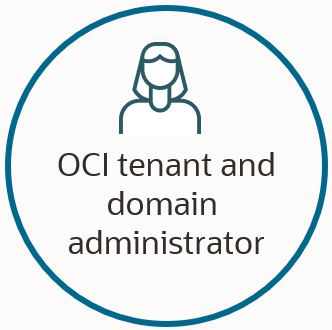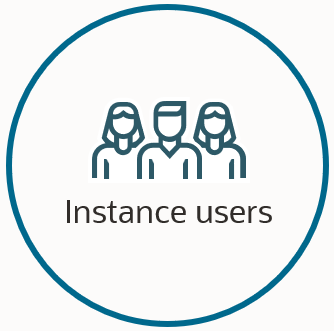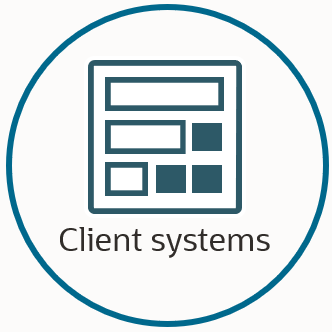Developer APIs: Control User and Client System Access
Understand your responsibilities for controlling access to the Developer APIs.
On This Page
Access at a Glance
| Area | More information |
|---|---|
|
People and systems that need access |
|
|
Authentication method: Several, depending on the API |
The APIs have different authentication methods:
|
|
Authorization methods: Service roles |
The APIs have different authorization methods:
|
How to Control Access
| Security goal | Owner | More information |
|---|---|---|
|
Create an OAuth client application with the appropriate scopes so that the client can access the API |
|
Follow the guidance for the API that you need to access:
|
|
Provision the users who need to access the REST APIs |
 |
If any users must access the customer-built-APIs, assign them the ServiceInvoker role. |
Note:
Instance users, typically integration developers, are responsible for configuring connections to integration endpoints. Afterward, the developer uses the connection in an integration, finalizes the integration, and activates the integration. When the integration runs, Oracle Integration exposes the integration endpoints. These integration endpoints follow the authentication for the adapter upon which the connection is based. Each adapter supports different authentication patterns. Oracle provides a guide for using each adapter. See Available Adapters for Connections in Using Integrations in Oracle Integration 3 for links to all adapter guides.
